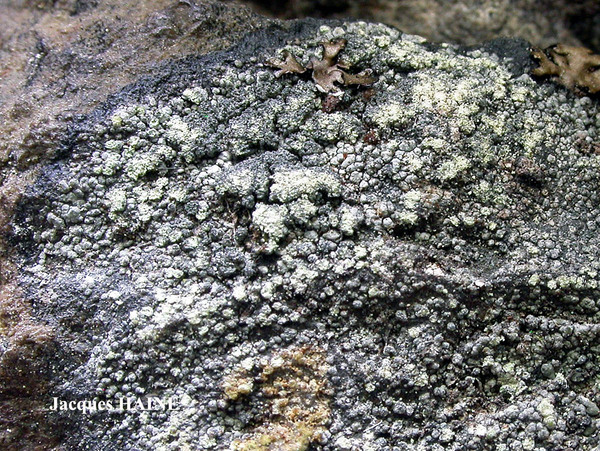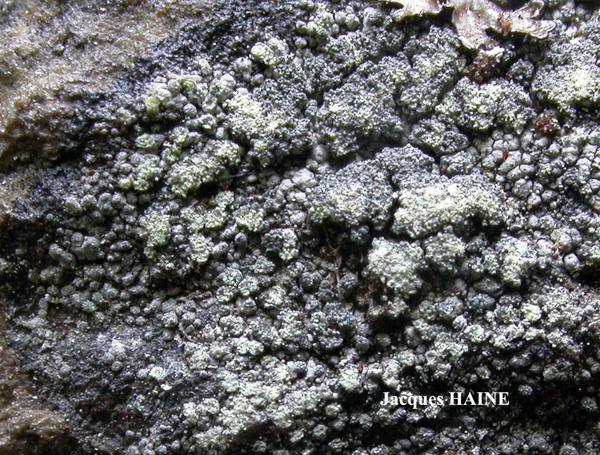Schismatomma umbrinum (Coppins & P. James) P.M. Jørg. & Tønsberg
Nordic J. Bot., 8, 3: 301, 1988. Basionym: Lecanactis umbrina Coppins & P. James - Lichenologist, 11: 144, 1979
Synonyms:
Distribution: S - Cal (Ravera & al. 2024b).
Description: Thallus crustose, episubstratic, mostly continuous to coarsely rimose, yellowish or greenish brown to pale brown, forming small patches delimited by a distinct, broad, dark prothallus, the surface smooth in marginal parts, rimose and warted in central parts, the warts bursting apically into irregular, finally often confluent soralia concolorous with thallus. Apothecia very rare, sessile, round to irregular or lobed, up to 1.5 mm across, with a more or less prominent thalline margin and a flat to finally convex, blackish-brown disc. Proper exciple thin, poorly developed; epithecium brown; hymenium colourless, I+ blue; paraphysoids straight, branched only in upper part; hypothecium brown. Asci 8-spored, fissitunicate, clavate, with two functional wall layers, thickened at the apex, with an internal K/I+ blue ring. Ascospores 3-septate, hyaline, fusiform, slightly curved, 18-22 x 3-5 μm. Pycnidia extremely rare. Conidia thread-like, curved, (10-)15-20(-30) x c. 1 μm. Photobiont trentepohlioid. Spot tests: thallus K-, C-, KC-, P–; medulla and abraded soralia UV+ ice-blue. Chemistry: schizopeltic acid, plus 2-3 unidentified UV+ substances. Note: a mainly western species growing on acidic rocks under overhangs, often with Enterographa zonata, with several records from the Eastern Alps, but the species might have been overlooked elsewhere, being almost always sterile. For further details see Jørgensen & Tønsberg (1988).
Growth form: Crustose
Substrata: rocks
Photobiont: Trentepohlia
Reproductive strategy: mainly asexual, by soredia, or soredia-like structures (e.g. blastidia)
Most common in areas with a humid-warm climate (e.g. most of Tyrrenian Italy)
In underhangs rarely wetted by rain
Commonnes-rarity: (info)
Alpine belt: absent
Subalpine belt: very rare
Oromediterranean belt: absent
Montane belt: rare
Submediterranean belt: very rare
Padanian area: absent
Humid submediterranean belt: very rare
Humid mediterranean belt: absent
Dry mediterranean belt: absent
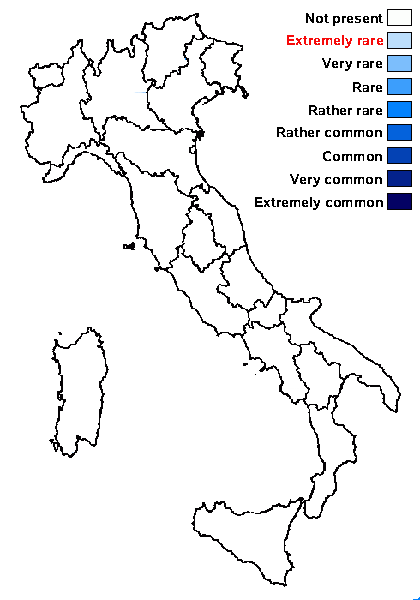
Predictive model
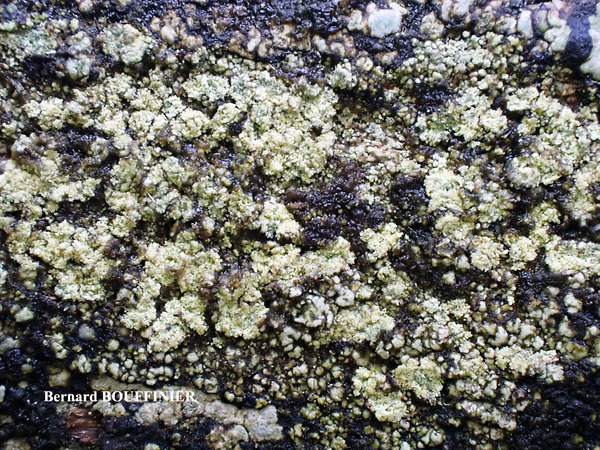
Bernard Bouffinier - Source: http://www.lichensmaritimes.org/index.php?task=fiche&lichen=1212&lang=en
France, Roche du Feu
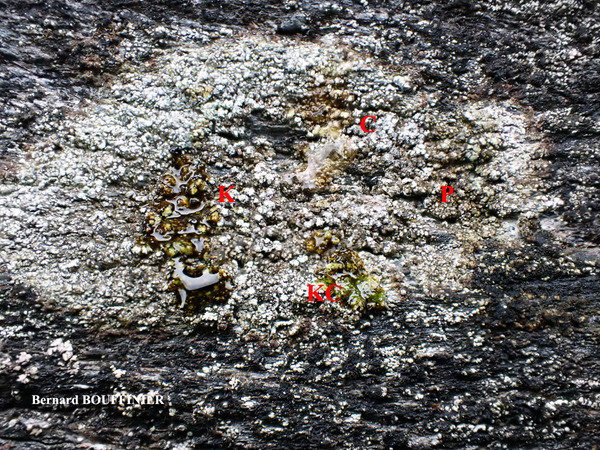
Bernard Bouffinier - Source: http://www.lichensmaritimes.org/index.php?task=fiche&lichen=1212&lang=en
France, Roc'h an Daol

Bernard Bouffinier - Source: http://www.lichensmaritimes.org/index.php?task=fiche&lichen=1212&lang=en
France, Roche du Feu
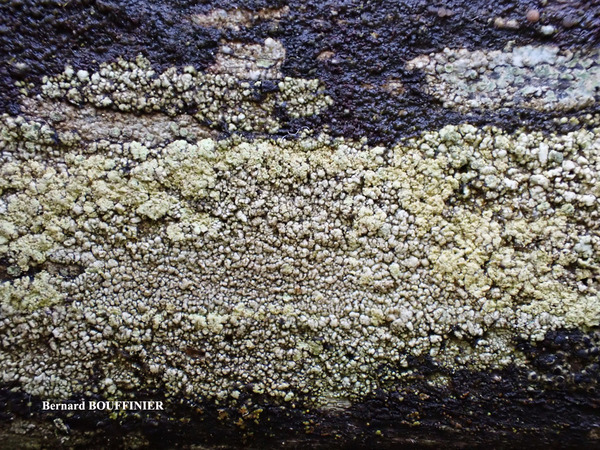
Bernard Bouffinier - Source: http://www.lichensmaritimes.org/index.php?task=fiche&lichen=1212&lang=en
France, Roche du Feu
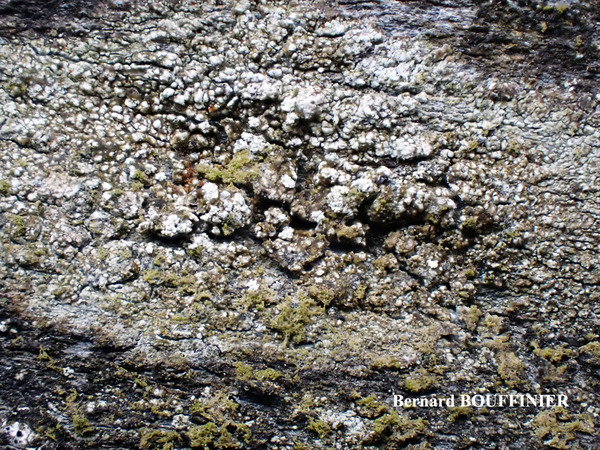
Bernard Bouffinier - Source: http://www.lichensmaritimes.org/index.php?task=fiche&lichen=1212&lang=en
France, Roc'h an Daol
Growth form: Crustose
Substrata: rocks
Photobiont: Trentepohlia
Reproductive strategy: mainly asexual, by soredia, or soredia-like structures (e.g. blastidia)
Most common in areas with a humid-warm climate (e.g. most of Tyrrenian Italy)
In underhangs rarely wetted by rain
Commonnes-rarity: (info)
Alpine belt: absent
Subalpine belt: very rare
Oromediterranean belt: absent
Montane belt: rare
Submediterranean belt: very rare
Padanian area: absent
Humid submediterranean belt: very rare
Humid mediterranean belt: absent
Dry mediterranean belt: absent

Predictive model

Bernard Bouffinier - Source: http://www.lichensmaritimes.org/index.php?task=fiche&lichen=1212&lang=en
France, Roche du Feu

Bernard Bouffinier - Source: http://www.lichensmaritimes.org/index.php?task=fiche&lichen=1212&lang=en
France, Roc'h an Daol

Bernard Bouffinier - Source: http://www.lichensmaritimes.org/index.php?task=fiche&lichen=1212&lang=en
France, Roche du Feu

Bernard Bouffinier - Source: http://www.lichensmaritimes.org/index.php?task=fiche&lichen=1212&lang=en
France, Roche du Feu

 INDEX FUNGORUM
INDEX FUNGORUM
 GBIF
GBIF
